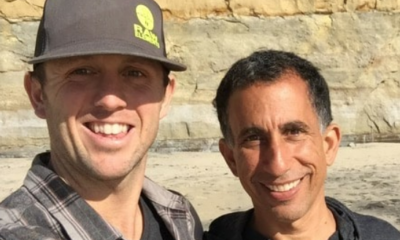Know
Florida’s HIV epidemic: Nearly 5,000 new cases diagnosed in 2016

The height of the HIV epidemic saw more than 7,500 new cases of HIV in Florida in 1992. While HIV rates have plummeted since then, prompting many to believe that the HIV/AIDS crisis is over, it remains devastating in cities across Florida – especially among minority and disenfranchised populations.
The fervent media attention surrounding HIV/AIDS issues began to drop off in the late ’90s and early 2000s, because “White gay men got ‘cured,'” says Dr. Jonathan Ellen of John’s Hopkins All Children’s Hospital. “Black gay men are dying. So the epidemic is still alive and kicking.” Dr. Ellen spent much of his long career as a social epidemiologist, studying the behaviors around the transmission of HIV and AIDS.
His statement may sound radical to some. While there is no cure for HIV, effective treatments have suppressed the virus enough to allow many to live relatively normal lives. These treatments are widely used in white populations, but the same is not true for black gay populations – the rate of black male HIV infection is 4.5 times that of white males and in 2013, 59 percent of Florida’s HIV-related deaths were black residents.
In 2015, Florida saw 27.9 new cases per 100,000 people, the highest rate of new infections in adolescents and adults in the US. Black men were by far the largest group affected by these diagnoses. While African Americans make up only 15 percent of Florida’s total population, they comprised 42 percent of the diagnosed HIV cases in Florida in 2016.
Despite increases in HIV testing, the availability of preventative measures like Truvada, and post-infection treatments that suppress HIV to non-transmissable levels, the number of new infections has not decreased dramatically since 2010. In fact, Florida saw 4,972 new cases of diagnosed HIV in 2016.
The problem, says Dr. Ellen, is that the access to the prevention and treatment is only one piece of the puzzle. Effectively treating populations who have HIV is another story. This is what researchers and practitioners call the cascade. Also known as the HIV care continuum, Dr. Ellen describes the cascade as “How many people have been tested? How many people know what their status is, meaning they went back for the test? How many people who are positive got linked with care, how many people who got linked with care took their meds, how many people who took their meds are actually suppressed?
“You’d like it to stay at 100 percent, right? Right across. But it drops down to about 15 percent when you get to the end of the cascade.” This drop, Dr. Ellen says, means only about 50 percent of people who are infected actually know that they’re infected, which means they may unknowingly be transmitting the virus to others.
In December 2017, the Florida Department of Health announced that it will make Truvada, the Pre-Exposure Prophylaxis medication (PrEP), freely available in all of the 67 county health departments by the end of this calendar year.
The question, however, is how that information will get transmitted to the populations that need it – and how that information will spur behavior changes that would lead to fewer new cases of HIV – such as taking the PReP medication, getting tested and getting adequate treatment once diagnosed.
One possible solution is a broader strategy of information transmission. Despite the checkered past of information campaigns surrounding public health, there is some merit to the idea that dispersed information changes norms, and ultimately changes society.
As such, media can play a role in spreading narratives, news and policy changes regarding health to larger populations. “Putting a fine point on ideas, articulating ideas that are perhaps not as well described … you bring thought to someone else’s voice, all those things matter over time and it works in that context,” says Dr. Ellen.
It comes down to this: “Do we believe the public discourse is good and can help improve society? I do believe that.”







